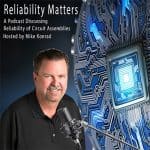
Myths of Product Development – Part 2

There are myths of product development that Quality can help with.
In the previous Part 1, we talked about how we cannot treat the product development process like a manufacturing process. But, there are ways we can apply Quality to the product development process without doing this. Quality can help with early concept development, to evaluate data, and to manage teamwork.
Listen to this Part 2 as we continue to unpack Harvard Business Review’s “The Six Myths of Product Development” by Stefan Thomke and Donald Reinersten. We review the final three of the six myths in the article, revealing the misconceptions around timing development cycles, getting things right the first time, and adding many features.
Discover how quality thinking and systems approaches not only enhances collaboration but also improves user experience from the ground up. By integrating insights from the concept phase, teams can make more informed and strategic decisions throughout the development lifecycle.








 Join Steven Giako and Dianna Deeney in a panel discussion of central themes in the books Brilliant! Shuji Nakamura And the Revolution in Lighting Technology and How to Win Friends and Influence People.
Join Steven Giako and Dianna Deeney in a panel discussion of central themes in the books Brilliant! Shuji Nakamura And the Revolution in Lighting Technology and How to Win Friends and Influence People. Ask a question or send along a comment.
Please login to view and use the contact form.
Ask a question or send along a comment.
Please login to view and use the contact form.